Anemometer - Definition, Types, Diagram, FAQs
In this article, we discuss anemometers. Physics is all about measurement. We measure pressure, length, mass, force, velocity, and many more quantities. We can also measure the speed of the wind. How to measure wind speed? There is a wind speed measuring device that can measure the speed of wind( or speed of air is measured ) by an instrument called an anemometer. An anemometer picture is shown in fig.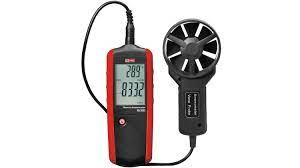

Key points:-
- Anemometer
- What is anemometer
- Anemometer uses
- Anemometer diagram
- An Anemometer measures
- How to make an anemometer
- The velocity of wind is measured by
- Wind speed is measured by / wind speed measurement unit
- anemometer how it works
- Anemometer definition
Also read -
- NCERT Solutions for Class 11 Physics
- NCERT Solutions for Class 12 Physics
- NCERT Solutions for All Subjects
How is wind measured?
An anemometer is used to measure the speed of the wind and the direction of the wind. We can define an anemometer as it is a device that measures the speed, pressure, and direction of the wind or it is the instrument to measure the wind speed. It counts the number of rotations of cups to calculate the speed of the wind. So, this instrument check wind speed. Who invented the anemometer? Leon Battista Alberti is the first one who invented the anemometer. Later in the 19th-century, the cup anemometer was invented by Irish scientist Thomson Romney Robinson. It is used by meteorologists. With the help of the speed and direction of the wind, meteorologists predict the weather. In Anemometer, the ‘Anemo’ word is derived from the Greek whose meaning is wind. An Anemometer meaning-an instrument that measures the speed of the wind. An anemometer meaning in Hindi- पवनवेगमापी | anemometer meaning in Tamil- அனிமோமீட்டர் |
- Anemometer units:- It measures the speed of wind in feet per minute (FPM).
- Wind speed measurement:- Wind speed is measured in Km/hr, miles/hour, and feet/second.
The wind speed unit in SI is m/s which is recommended by the World Meteorological Organization.
Wind speed definition is the rate at which air is flowing in a particular area.
Related Topics Link,
What is a anemometer used for/ what is the use of anemometer:-
Anemometer use:-
- An Anemometer is used to measure the airflow from the air conditioner, heating devices, and ventilation ducts, etc.
- A wind anemometer is used to measure the pressure of wind
- It is used to measure the quality of wind and to know the upcoming weather.
- It is used to measure the rate of flow of air etc.
Wind pressure is measured by/the speed of wind is measured by /speed of air is measured by an anemometer.
Types of anemometer:-
- Cup anemometer
- Vane anemometer
- Hot Wire anemometer
- Laser doppler anemometer
- Acoustic resonance meter
- Ultrasonic anemometer
- Ping-pong ball anemometer
- Cup anemometer:- Irish scientist Thomson Romney Robinson invented this anemometer in 1845. It is also known as the Robinson cup anemometer. It consists of three or four cups that are attached to the horizontal pole. As the wind starts, cups start to spin and count the speed of wind which displays on the digital screen. It is composed of, so we can easily hold it in our hand and also it is mounted on the buildings or sailboats. Wind speed is measured with the anemometer.
The Cup anemometer diagram is shown in fig.
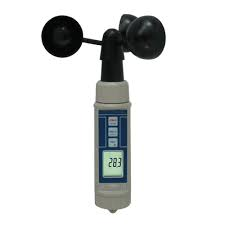
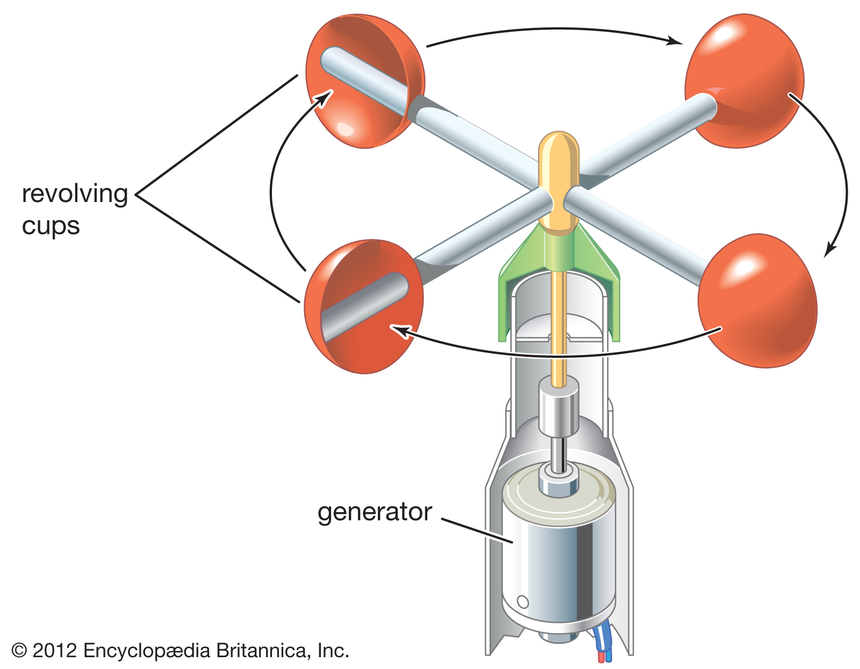
- Vane anemometer:- Wind vane anemometer, the anemometer is used to measure the speed as well as the direction of the wind. The axis of the vane anemometer is parallel to the direction of the wind. A propeller and the tail on the same axis are present in the anemometer and give precise and accurate reading than the cup anemometer. As the speed of the wind is high the rate of the propeller is also high.

NCERT Physics Notes :
- NCERT Notes class 11 physics
- NCERT Notes class 12 physics
- NCERT Notes for all subject
- Hot-wire anemometer:- Hot-wire anemometer is used to measure the speed and pressure of the wind. A fine wire is electrically heated to some specific temperature. As the wind flows beyond the wire cools the wire. It gives a quick and accurate response to the velocity of the wind. Constant current anemometer ( CCA ), Constant voltage anemometer ( CVA), and constant-temperature anemometer ( CTA) are the types of hotwire anemometer.
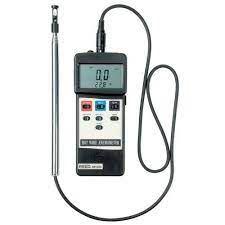
- Laser doppler anemometer:- It is a setup that is the most accurate anemometer than any other device. In this, a laser beam is used which is split into two beams. One of the beams propagates out of the anemometer and flows along with air molecules where the beam exits to reflect the light back into a detector. Here it is measured relative to the original laser beam. They produce a Doppler shift when the particles are in great motion for measuring the speed of the wind. In Jet engines or river hydrology, this type of anemometer is used.
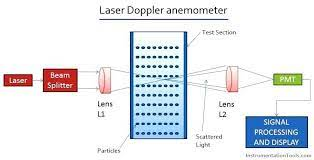
- Ultrasonic anemometer:- It uses ultrasonic sound waves to measure the wind velocity. By sending the sound waves between the transducer we can calculate the speed of the wind. It has no moving parts and no need for calibration. It is expensive but being weather compatible means there is a negligible effect of weather on it. There are two types of ultrasonic anemometer: two dimensional and three-dimensional ultrasonic anemometer.
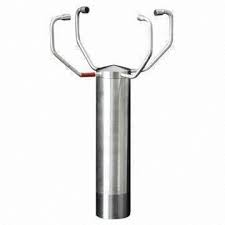
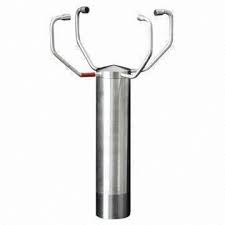
- Acoustic resonance anemometer:- It is the modified variant of the sonic anemometer. Savvas Kapartis in 1999 developed the technique of acoustic resonance anemometer.
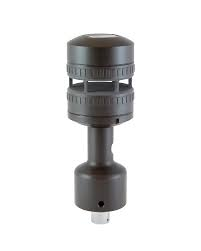
- Ping-pong ball anemometer:- It is a very basic construction that is made from the ping-pong ball attached to the string. The ball is very lightweight so it can easily be moved by the wind. It is mainly used in the school to teach the kids.
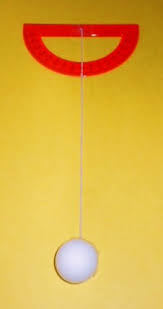
Also read :
- NCERT Solutions for Class 10 Science Chapter 14 Sources of Energy
- NCERT Exemplar Class 10 Science Solutions Chapter 14
- NCERT notes Class 10 Science Chapter 14 Sources of Energy
How does an anemometer work?
Anemometer working:- Anemometer working principle is that when the wind hits the cups of an anemometer. They start to spin and by counting the rotations of cups we can know the speed of the wind. With the help of this principle, the speed of the wind is measured by an anemometer.
An anemometer function is to measure speed and pressure of the wind.
Anemometer model:- How to make an anemometer at home?
We need some material and we can easily make a cup anemometer at home.
5 paper cups
Scissors
Hole punch
Duct tape
Empty water bottle
Three thin wooden dowels

Method:- Do the hole in the sides of four cups with the help of a hole punch. Punch the four holes in that one left cup (which is used in the center) opposite to each other just below the rim. After that put two wooden dowels in the hole of this cup as shown in fig. Now put the ends of these straws in the hole of the other four cups and tape them carefully so that they can easily move. Insert the third wooden dowels from the bottom of the centered cup until it meets the two wooden dowels. Now tape them carefully to make sure all cups are in the same direction. Insert the center wooden dowel inside the empty bottle and your anemometer is ready for the test. This is all-important anemometer information.
Also check-
Frequently Asked Questions (FAQs)
An anemometer is used to measure wind speed.
Leon Battista Alberti is the inventor of anemometer.
The instrument to measure wind speed of wind is an anemometer.
The purpose of an anemometer is to measure the speed of the wind.
Wind speed is expressed in meters per second.
Knots.
Also Read
02 Jul'25 05:04 PM
02 Jul'25 05:01 PM
Articles
Questions related to
Correct Answer: Wind
Solution : Given:
Hygrometer : Humidity :: Anemometer : ?
Like, a Hygrometer is used to measure Humidity.
Similarly, the Anemometer is used to measure Wind.
Hence, the first option is correct.
Correct Answer: Speed of wind
Solution : The correct answer is the Speed of wind.
An anemometer is a tool that is used to measure wind speed, and it is commonly used in weather stations. According to historical records, this device was first invented by Leon Battista Alberti in 1450. Later, in 1845, Rev Dr. John Thomas Romney Robinson developed an improved version of the anemometer, which is a simpler type of device.
Correct Answer: Ammeter : Electric Current
Solution : Given:
Hygrometer : Humidity (The hygrometer measures Humidity.)
Let's check the given options –
First option: Thermometer : Blood Pressure; A Thermometer measures body temperature, not blood pressure.
Second option: Anemometer : Current; Anemometer measures wind speed, not current.
Third option: Screw Gauge : Heat; Screw gauge is used to measure small distances.
Fourth option: Ammeter : Electric Current; Ammeter is used to measure electric current.
So, only the fourth option follows the same logic as the given word pair. Hence, the fourth option is correct.
Correct Answer: Lactometer - Specific gravity of liquids
Solution : The correct option is the Lactometer - specific gravity of liquids.
A hydrometer or lactometer is a device that uses the concept of buoyancy to measure the density or relative density of liquids. Typically, they are graduated and calibrated using one or more scales, like specific gravity. A lactometer measures the specific gravity of milk, not liquids in general. It gauges milk density to assess its composition. Specific gravity is the ratio of a substance's density to the density of a reference substance, usually water. The lactometer is specific to assessing milk density, not that of all liquids.

